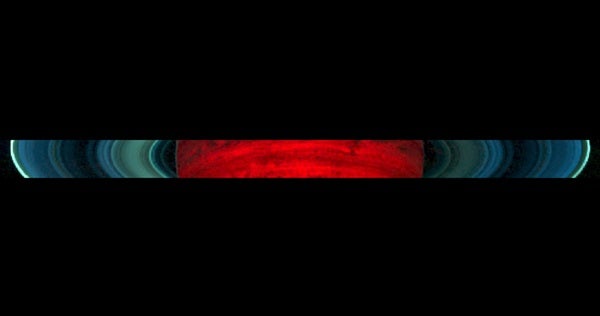“Looking at the Saturn system when it is backlit by the Sun gives scientists a kind of inside-out view of Saturn that we don’t normally see,” said Matt Hedman from the University of Idaho in Moscow. “The parts of Saturn’s rings that are bright when you look at them from backyard telescopes on Earth are dark, and other parts that are typically dark glow brightly in this view.”
It can be difficult for scientists to get a good look at the faint outer F, E, and G rings or the tenuous inner ring known as the D ring when light is shining directly on them. That’s because they are almost transparent and composed of small particles that do not reflect light well. What’s different about this viewing geometry?
- When these small particles are lit from behind, they show up like fog in the headlights of an oncoming vehicle.
- The C ring also appears relatively bright here, not because it is made of dust, but because the material in it — mostly dirty water ice — is translucent. In fact, in the 18th and 19th centuries, it was known as the “crepe ring” because of its supposed similarity to crepe paper.
- The wide middle ring known as the B ring — one of the easiest to see from Earth through telescopes because it is densely packed with chunks of bright water ice — looks dark in these images because it is so thick that it blocks almost all of the sunlight shining behind it.
Infrared images also show thermal, or heat, radiation. While a visible-light image from this vantage point would simply show the face of the planet as dimly lit by sunlight reflected off the rings, Saturn glows brightly in this view because of heat from Saturn’s interior. In a second version of the image, scientists “stretched” or exaggerated the contrast of the data, which brings out subtleties not initially visible.
- Structures in the wispy E ring — made from the icy breath of the moon Enceladus — reveal themselves in this exaggerated view.
“We’re busy working on analyzing the infrared data from this special view of the Saturn system,” said Phil Nicholson from Cornell University in Ithaca, New York. “The infrared data should tell us more about the sizes of the particles which make up the D, E, F, and G rings and how these sizes vary with location in the rings, as well as provide clues as to their chemical composition.”











